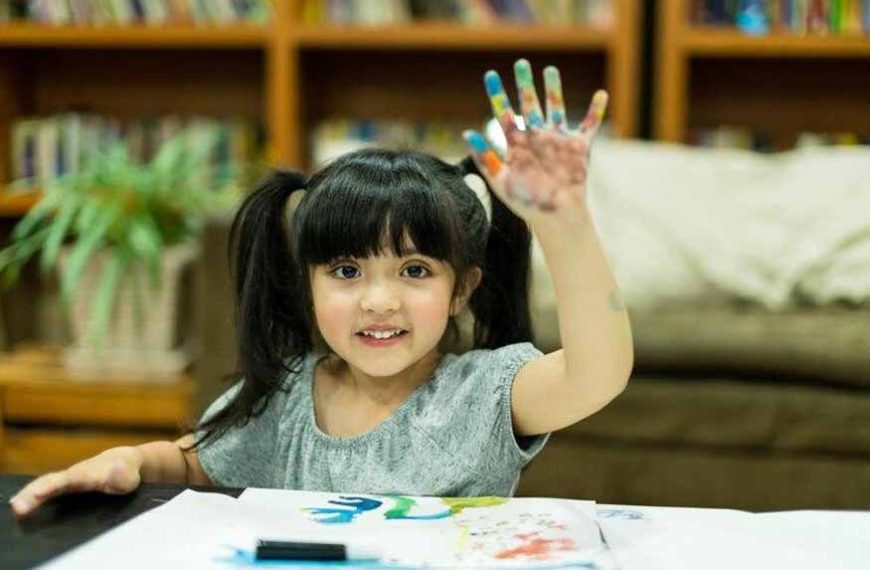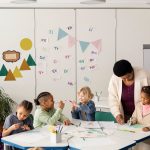Parents often dismiss coloring books as just another way to keep young children happily entertained for a little while. However, the value of this classic childhood activity goes far beyond simple amusement. Recent research continues to uncover developmental advantages that make coloring much more than basic entertainment for little ones.
Teaches Color Recognition And Motor Skills
For young kids still learning their colors, coloring books introduce color concepts by assigning specific colors to objects. As children color, they begin to associate the color words, hues, and objects. This prepares them to recognize colors more readily. The physical motions involved in grasping crayons, coordinating hands, and scribbling back and forth also steadily build up fine motor coordination. Both color recognition and motor dexterity are vital to school readiness skills.
Provides Stress Relief And Relaxation
Between school demands, extracurricular activities, and family life, children often deal with stress, too. Coloring gives kids a designated time to unwind while immersed in an enjoyable, low-pressure task. The repetition of choosing colors and filling in spaces has a soothing, almost meditative effect for many kids. This brief respite from stress enables them to relax their bodies and minds before productively transitioning into other responsibilities.
Encourages Patience And Perseverance
Complex coloring pages, especially detailed scenes or images with intricate patterns, are not meant to be rushed through. Children must take their time observing the picture and applying colors thoughtfully. This extended process promotes patience. Continuing to color until the page is fully completed also instills the important concept of perseverance. Kids learn to keep trying despite challenges and not give up easily. These traits equip kids to stick to long-term goals.
Fosters Hand-Eye Coordination
Coloring is a visual-spatial activity requiring simultaneous coordination between vision and fine motor movement. Kids must guide crayons across the page with intentional strokes and pressure to fill in the desired spaces while their eyes follow the paths for accuracy. The eyes and hands work together, helping form neural connections that steadily improve hand-eye coordination. Enhancing this ability early on benefits physical abilities.
Sparks Imagination And Storytelling
Looking at a blank scene often stimulates a child’s imagination before coloring even begins. Kids envision how they intend to create the final picture. As they color characters or events, narrative plots unfold in their minds. Coloring pages with sequential boxes or panels also cultivate storytelling skills. Kids essentially visualize a storyline frame by frame to build a cohesive tale integrating their color choices. Either way, coloring provides a springboard for exercising imaginative thinking.
Provides An Emotional Outlet
Children sometimes struggle to fully articulate complex feelings like frustration, sadness, anxiety, or disappointment, particularly to parents. Coloring can provide a constructive outlet for processing challenging emotions. Through color selection and symbolic expression like pressing firmly or roughly with crayons, kids convey and work through intense moods onto paper. Externalizing inner feelings through coloring gives kids an alternative to inappropriate behaviors when overwhelmed.
Introduces Early Math Concepts
Incorporating numbers, shapes, and counting into coloring encourages the development of math skills. Identifying how many objects to color on a page or recognizing color names as fractions introduces basic numerical and mathematical concepts. Simple activities like staying within the lines also reinforce the spatial reasoning ability needed for geometry. This blended approach meets kids at their level while laying the foundation for math comprehension.
Connects With Interests And Learning Themes
Coloring sheets featuring kids’ favorite animals, toys, cartoons, and storybook characters turn coloring into an engaging, appealing activity. This investment captures their attention and makes learning fun, too. Coloring pages can also enrich academic or learning units on themes like transportation, seasons, family life, and geography with vivid illustrations. Connecting coloring to things that excite students motivates them to color while absorbing new concepts through things they like.
Promotes Mindfulness And Meditation
Coloring requires modest levels of mental energy but in a calm, quiet state rather than strenuous thinking. The soft cognitive demand, along with the repetitive motion of coloring, induces a state similar to mindfulness meditation. This centering practice emphasizes being intentionally present and attentive to the current moment. Meditation through coloring helps kids focus their awareness, avoid external distractions, and achieve greater mind-body balance.
Boosts Confidence And Decision-Making Skills
Making choices comes naturally to children, whether selecting their outfits for the day or meal options based on personal preferences. Coloring pages allow kids to practice making more impactful creative decisions about the color combinations and effects they produce and instead of meaningless choices, coloring fosters decision making and judgment skills with tangible visual outcomes. Successfully exercising these skills empowers kids and cultivates self-confidence.
Increases Class Participation And Social Skills
Sharing and explaining coloring choices to classmates enables less verbal students to engage in discussions about their feelings, opinions, and mental processes. This helps teachers better understand students’ thinking while improving children’s comfort in expressing themselves. Peer interactions around coloring also nurture social skills like describing opinions to others, listening actively, and Cooperatively resolving conflicts over favored crayons.
Accessible Anywhere For Portable Fun
Coloring books provide:
- Boundless on-the-go entertainment for kids in airports.
- Waiting rooms.
- Long car rides where electronic distractions are not an option.
Pages can be removed or photocopied at home to compile customized travel packs with a standard box of crayons. The minimal supplies are highly portable, so parents have an easy activity handy wherever needed to occupy kids. The anywhere access makes coloring a dependable, screen-free travel diversion.
Promotes Appreciation Of Art And Nature
Introducing children to beautiful drawings, iconic paintings, and images of natural scenery opens discussions about art styles. Kids also observe details more closely to replicate shades, textures, and techniques. This exposure fosters artistic appreciation. Coloring familiar community helpers, landscapes, plants, and animals likewise heightens awareness of environmental elements. Blending art and nature builds foundations for visual arts education and environmental consciousness.
Supports Occupational Therapy Goals
For children dealing with developmental delays, motor disabilities, or recent trauma needing therapeutic treatment, coloring can provide targeted practice in a constructive way. Under occupational therapy guidance, tailored coloring aims to regain strength, enhance sensory stimulation skills, or focus the mind toward positive goals like recovered functioning. Because coloring is already soothing and rewarding for kids, it does not feel like grueling rehab. The training also transfers directly to everyday tasks.
Coloring on a daily basis improves dexterity, vision, creativity, patience, focus, self-expression, and reasoning abilities while reducing stress and frustration when kids need an emotional outlet. Kids also reap other benefits like practicing independent decision making, building artistic taste and connecting with book themes or academic lessons. As a versatile, screen-free activity custom-fit to children’s interests, coloring fosters a well-rounded learning experience packed with developmental advantages. While keeping kids happily occupied for extended periods during hectic days, a coloring book and box of crayons ultimately set the stage for growth and success.
Preparing Your Child for Elementary School
Now that we have understood the benefits of sending children to preschool, let’s take a look at another crucial aspect of your child’s developmental journey. Adjusting to a new environment away from home can be quite challenging for your child. Hence we all must take some proactive steps to ensure the child is well prepared for preschool. All parents and caregivers must prepare their children for this new experience by taking these specific actions.
- Emotional Preparation
- Developmental Preparation
- Preparation for Learning
Emotional Preparation
Getting to know about new people and places like schools can be overwhelming for your children. Taking kids to school at least once will familiarize them with the place. Asking the teacher about your kid’s day activities and behaviour will give you an overall idea about your child. If an older kid already attends the same school, then make them take care of their younger sibling. Make the young one understand school.
These things help your child be prepared emotionally.
Development Preparation
During a child’s initial year in school, a key goal is to foster their independence, both in personal matters and academics. It’s crucial for children to shift from relying on adults to becoming self-assured individuals. School teachers and staff will aid your child in becoming independent learners, yet there are numerous ways you can also encourage your child’s independence prior to their school debut.
Your kid should develop a habit of going to the bathroom and related activities such as using wiping towels, washing hands etc.
Help your child understand hygiene. This way even if you are not around they can take care of themselves.
Make your child get dressed and eat food by themselves with your minimum to zero effort.
Incorporating these tasks into your child’s daily routine will have a positive developmental aptitude.
Preparation for Learning
Children’s academic progress is supported by their growth in personal and social development, communication and language, and physical development. Nevertheless, there are methods you can employ to provide them with a solid academic foundation.
Reading with your child can do wonders. They develop a habit of reading and start to get used to the sounds of the words. This makes them recognize whenever they come across those words and say them to you out loud.
Make them write their own name. Let them spell their name and make them pronounce their name correctly. Once the kid shows improvement, repeat the process with the names of the family members; one at a time.
Finally the most basic and yet important learning section; counting.
Make your kids count numbers by visually showing them with their fingers. This works wonders. Visuals make them learn easier and faster. Ask them to show the number with their fingers once they get familiar with counting.
For more such interesting blogs, Visit EuroKids















